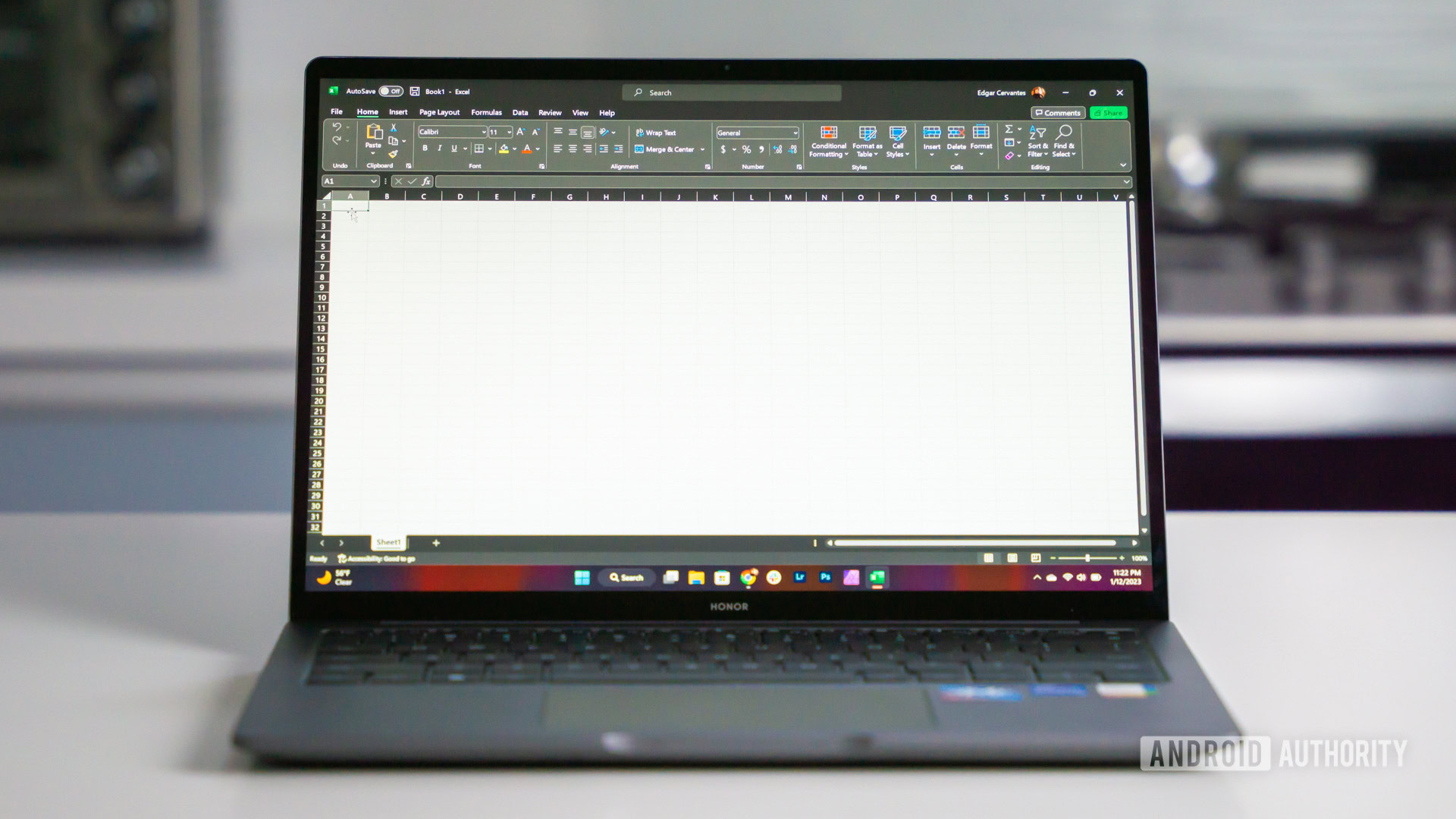Affiliate links on Android Authority may earn us a commission. Learn more.
How to check which version of Excel you have
Published onDecember 11, 2023
There have been so many different versions of Excel over the years that it can be tough to nail down the version you’re running. It’s been made even more complicated by Microsoft’s move to the subscription-based Office 365 for its suite of office apps. If you’re struggling with this, we’re here to help. Here’s how to discover what version of Excel you have.
QUICK ANSWER
On newer editions of Excel, you can find version details by opening a document and clicking File > Account > About Excel. The steps for older editions of Excel differ slightly, but version details can generally be found by clicking Help > About in the program.
JUMP TO KEY SECTIONS
How to check your Excel version on Windows

The quick ways to find your Excel version
If you need to know which Excel edition you’re running (2007, 2013, etc.), you can wait for the splash screen to appear after opening Excel on your computer. The edition should be displayed below the prominent Excel branding.
You can also search for and visit Add and Remove Programs in the start menu on newer versions of Windows or Programs and Features via the Control Panel on older versions. Search for Office; the version number should be displayed alongside the package name.
However, you might need more information than this, including the actual build number, bit version, or product ID. The method for finding this information on the Excel versions throughout the years differs slightly, so we’ll detail these slight differences below.
Newer versions of Office
If you own a version of Office from 2013 or newer, follow the steps below.
- Open an Excel file.
- Click File > Account > About Microsoft Excel.
- Notably, the Product Information box also details some basic information, including the version number, type of installation, and what update channel you’re on.
- About Excel takes you to a more informative page that details the full version number and bit version of your Excel installation.
Older versions of Office
Generally, office versions of 2010 and older display more distinct design idiosyncrasies. You can effectively use these little differences to tell which edition of the software you’re running.
For instance, Excel 2010 features a bold green File button with shading that blends across the toolbar and title bar. Excel 2007 is famous for its circular Office button, while it was also the first version of the program with large toolbars. Excel 2003 has a more compact layout than 2007 and uses color shading reminiscent of older versions of Windows.
To find out which version of these older Excel editions you’re running:
- Excel 2010: Open an Excel document, click File, then Help. You should see the product information on the right-hand side of the window.
- Excel 2007: Open an Excel document, click the round Office button, then click Excel Options at the bottom of the menu list. Click Resources in the left-hand pane, then the About button on the right. A dialog box will appear with all the version details you may require.
- Excel 2003 and older: Open an Excel document, and click Help > About Microsoft Excel. A dialog box will appear with all the version details you may require.
How to check your Excel version on Mac
Users running macOS devices can easily find out which Apple version of Excel they’re running.
- Open an Excel spreadsheet.
- Click Excel, then About Excel.
- The version number should be listed, as well as the product ID, license, device ID, and license owner.
You can drill down further into Excel version history on Mac and Windows with the official Microsoft Office updates page.
FAQs
The latest version of Excel is bundled with the Microsoft 365 subscription package.
You can find the update history for Microsoft 365 apps here.
Excel 2010 is no longer supported by Microsoft. The decade-old software also lacks the features you’ll find in newer versions of Excel.